
Airing down your tires before hitting the trail is a good way to increase traction, which is due to a larger contact patch that comes with lower air pressure. Airing down can also improve the ride quality. I was amazed at the difference when driving on washboard dirt roads in Colorado, which I’d traveled before without airing down. Sooo smooth…
There are a number of different ways to air down. A simple and free, but somewhat time-consuming method involves manually depressing the core of each valve stem to release air, followed by a check with a pressure gauge repeatedly until the desired pressure is achieved at all four corners.
A faster, but similar route is via the use of an analog-gauged ARB E-Z Deflator or MORRflate, like Brenan has written about, or the ARB Digital Tire Deflator that Clint recently reviewed. Both of these still require some time at each tire and repeated deflating/checking.
Coyote Enterprises Automatic Tire Deflators allow easy and automatic tire deflation to pre-set pressure via a spring-loaded check valve and adjustable body.
Where to buy?
- Amazon: Check Price
- Coyote: Check Price
- Coyote Blemished Set: Check Price
Note: There is now a V2 of this set.
Using them could not be much easier! Simply screw the tire deflator onto the valve stem, pull the manual start ring to start the release of air, and move onto the next tire. Once the leaking stops, all four tires will have been deflated to the same pressure.
Table Of Contents
Design & Construction

Coyote Enterprises Automatic Tire Deflators are made in the USA, and constructed of solid brass, with a stainless steel spring, and silicone pad.
Each set of tire deflators includes two sets of springs that allow for setting pressures from 1 to 65 PSI, ± 0.2 PSI. A carrying case with a hook and loop fastener closure and quick set instructions are also included.
The Coyote tire deflators have an adjustment cap with a hex shape and adjustment reference mark, along with a hex-shaped lock collar that makes adjustments easy and ensures that they stay set.
The threaded end of the tire deflators that attaches to the valve stem has a “Quick Chuck”, which reduces the number of turns required for installation.
The manual start ring is easy to grip and begin the process of airing down.
Tire Deflator Adjustment
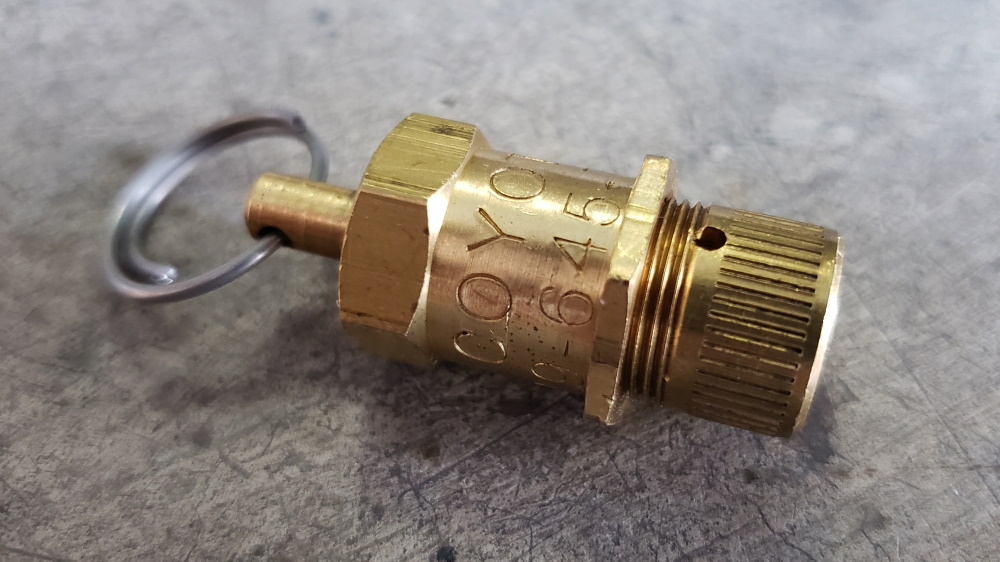
Coyote Enterprises defines the “destination pressure” as the pressure that you have set when the Coyote deflator automatically shuts OFF in the range of 1 to 65 PSI.
The two sets of springs that come with each set of four tire deflators cover two ranges. The silver-colored springs provide destination pressure of 1-20 PSI. The red-colored springs allow for destination pressures from 8-65 PSI.

Coyote offers the option of having their tire inflators pre-set to the desired destination pressure, from 1 to 65 PSI, at no additional charge for the CED456 model. If you already know what pressure you frequently air down, it is nice to be able to order a set of tire deflators that is ready to go, right out of the box.
I ordered my Coyote deflators with a pre-set destination pressure of 20 PSI. When I tested them on one of my tires at home, my Longacre Racing Products tire gauge showed the tire to have ~19.5 PSI in it. This is pretty much right on the money, given the variance that likely exists between my gauge, the one used at Coyote Enterprises, and environmental conditions.
To change the destination pressure of the deflators, loosen the lock collar and adjustment cap using open-end wrenches, and either lengthen or shorten the overall length of the deflator by turning the adjustment cap.
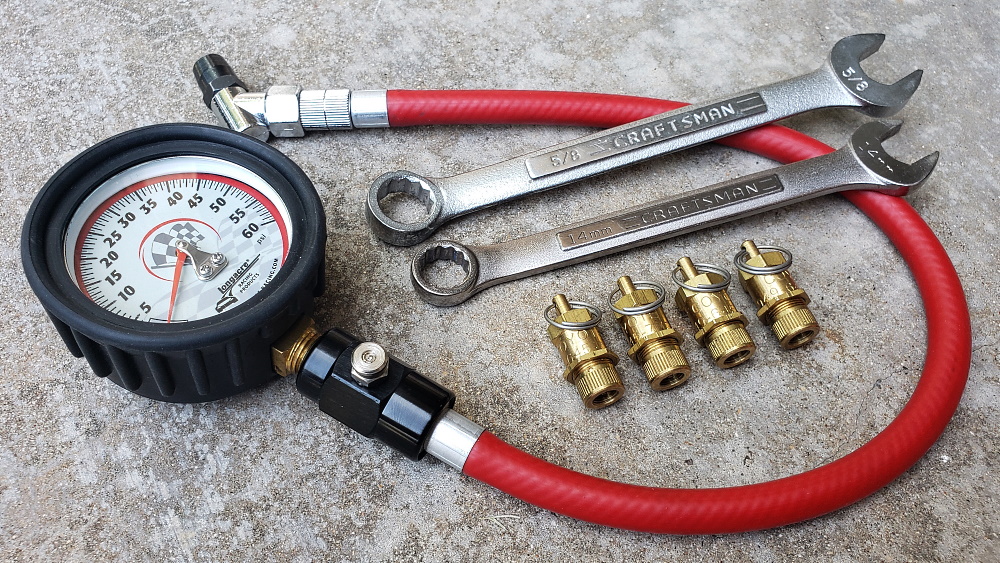
Silver Springs:
When silver-colored springs are used, each full revolution of the adjustment cap increases or decreases the destination pressure by 4 PSI, ±0.5 PSI.
Red Springs:
When red-colored springs are used, each full revolution of the adjustment cap increases or decreases the destination pressure by 7 PSI, ±0.5 PSI.
The reference mark on the adjustment cap can be used to keep track of how many partial or full cap revolutions have been done.
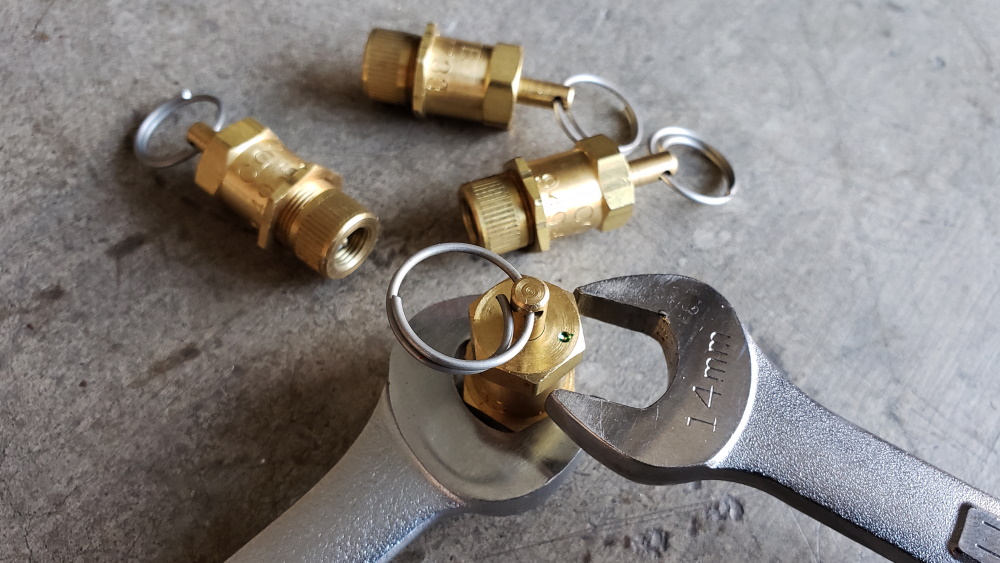
Suppose you have two different pressures that you regularly air down to, like one for forest roads and another for rock crawling. In that case, you can set a pair of deflators to one destination pressure (i.e., 20 PSI), and the other pair for another destination pressure (i.e., 12 PSI). Use something like a paint pen to mark one pair, and use the deflators in pairs to air down to the desired pressure all the way around, without having to buy two full sets of tire deflators.
For additional info and tips, see the Quick Set instructions on the Coyote Enterprises website (the same instructions are printed on a small card that is included with the deflators).
How To Use Them
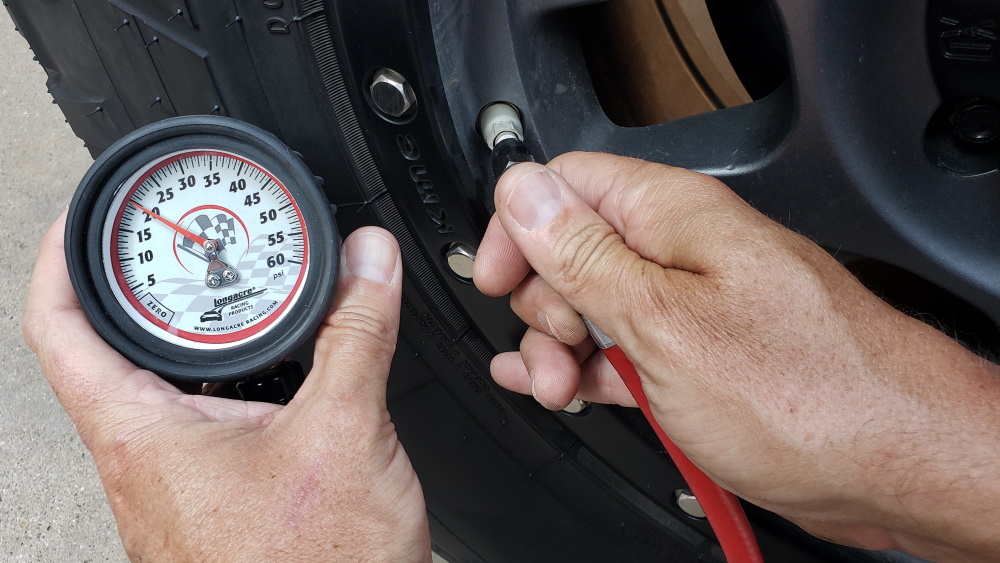
Using the tire deflators is easy peazy. Unscrew the valve stem caps, and screw the deflators on in their place. Pull the ring, and move on to the next tire. Air will be released from each deflator until the destination pressure is reached.
When I tested the Coyote tire deflators, I found that it takes ~3 minutes to deflate my 285/70-17 tires from 38 PSI to 20 PSI. I like the fact that I can simply screw the tire deflators on each valve stem, and then do something else while the tires are automatically deflated.
Coyote Enterprises recommends always running a cap on the valve stem. Although their tire deflators can be left on the valve stems when hitting the trail, they should be removed at the first opportunity, as valve stem damage could occur should a hard place get caught between a rock and a Coyote tire deflator.
Options & Pricing

There are three versions of the Coyote Enterprises Automatic Tire Deflators available at this time. All have exactly the same features, functionality, and warranty, but the difference is cosmetic.
The models denoted as CED456X are CED456A “blems”, with the Coyote name and phone number engraved upside down on the adjustment cap.
How much are they?
- Amazon: Check Price
- Coyote: Check Price
- Coyote Blemished Set: Check Price
You’d be hard-pressed to know which side was up or down unless someone from Coyote told you.
A set of model CED456X tire deflators is a few bucks less, as they don’t include the option to have a pre-set destination pressure. The price for the model CED456A tire deflators includes being pre-set to a specified destination pressure. Both models are available at a substantial discount if purchased in quantities of ten sets or more. Contact Coyote Enterprises for the group buy pricing.
Model CED456 is a non-blemished, with a price that includes being pre-set to a specified destination pressure.
Coyote Enterprises Vs. Staun Vs. Knock-Offs
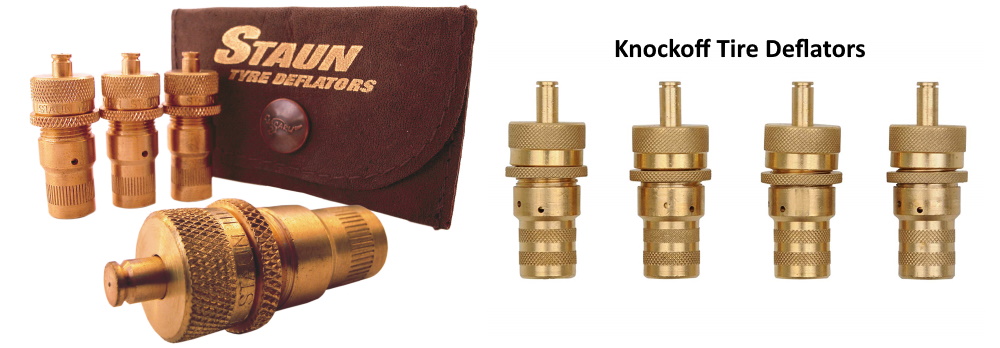
Coyote Enterprises’ automatic tire deflators are similar to those from the Australian company Staun, but with some key differentiators. There are also a number of knockoff tire deflators that sell for ~$25, but don’t measure up to the quality or functionality of the Coyote and Staun deflators.
Sound: Air is released from the Coyote Enterprises tire deflators at a fairly quick rate, but without an overly loud or unpleasant sound. This differs from some of the similar knockoff models, which make a loud, shrieking sound when releasing air.
Consistency: Tire deflators from Coyote reach consistent destination pressures (repeatable to ± 0.2 PSI), and stay where set due to the hex-shaped adjustment caps and lock collars that can be tightened using open-ended wrenches.
Staun tire deflators and their knockoffs have only knurled surfaces, which are finger tightened and can come loose over time, while using tools on these surfaces voids the warranty. Knockoff versions may continue to slowly leak after the valve closes, leading to different pressures between tires.
Speed: Coyote tire deflators are ~20% faster than similar units from Staun that cost more. Knockoffs are likely even slower.
Usability: The manual start ring on Coyote deflators is easy to grasp and pull, versus small fingernail grooves on Staun and knockoff deflators. Coyote tire deflators can be left on valve stems while on the trail, without affecting the warranty, but caution is advised when doing this.
Pressure Range: A single set of Coyote tire deflators covers destination pressures from 1-65 PSI. To do this with Staun deflators, three different models would be needed.
Price: Coyote deflators are less expensive than Stauns and require only one set to cover a greater range of destination pressures. In addition, Coyote models are available with pre-set destination pressures, which Staun and the knockoffs don’t offer. The “blem” versions are an even better value. Get them while they last!
Warranty: Coyote Enterprises tire deflators have a lifetime warranty that covers flaws in material and workmanship for the original purchaser.
Staun deflators have a 2-year warranty, and the knockoffs – who knows??

We just got our set. It’ll make airing down in the dark to get on the beach easier than the ARB deflator.
Great review! I’ve been using coyote deflators for years on my offroad rig and love them. Don’t recall them having the option when I bought to get them preset, but that’s nice..For novices, they’re a little tricky to get the pressure right, and it will take some trial and error, but once set you can forget..if you’re running really low pressure (12PSI or <) make sure you have a gauge that will read properly.